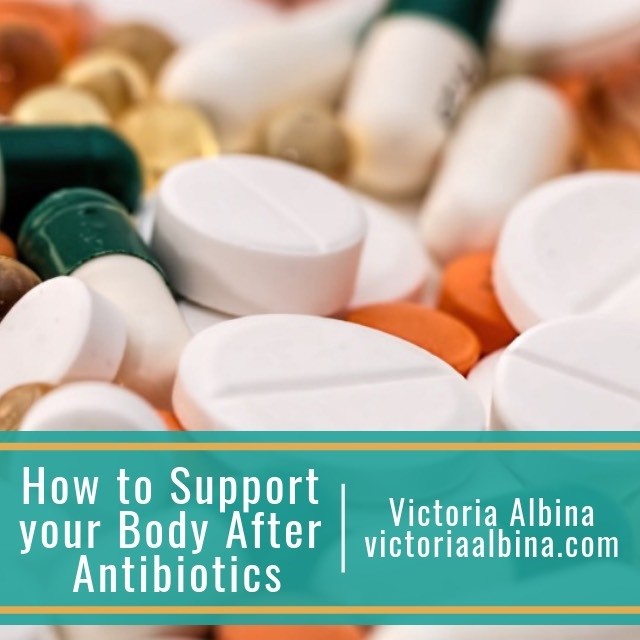How to Support Your Body After Antibiotics

No one can deny the beneficial effects of antibiotics.
Their ability to eradicate harmful infections and save lives has made them indispensable. That said, their convenience and ease-of-use has led to problematic over-prescribing. Meanwhile, our understanding of the harmful effects of antibiotics on our microbiomes is improving. If you find yourself in need of a course of antibiotics, how can you protect your microbiomes during and after your treatment to restore your gut, skin, vaginal or other bacteria back to its natural, balanced state? Read on to learn all about it.
What do antibiotics do and how can they be “harmful”?
Antibiotics kill bacteria. They can also stop bacteria from spreading. This is often extremely helpful. Antibiotics can kill off harmful bacteria that can trigger our immune systems, leading us to feel sick. Antibiotics can also be harmful, especially if taken when not needed. In addition to killing off overgrown or invasive bacteria, friendly gut bacteria that we need for a healthy body and digestion get killed off as well. This change in the balance of the microbiome may leave us with side effects like gas and bloating. Antibiotics can also worsen leaky gut. When our protective bacteria are killed off, fungus such as Candida albicans and other strains can become overgrown. It’s super common for folks to get a vaginal or other yeast infection after antibiotic use. This is because those potentially life-saving antibiotics also wiped out your protectors!
Restoring your good gut flora
There are many things we can do to help those beneficial bacteria to flourish again after a course of antibiotics. I’ve mentioned many of these before as they relate to overall gut health, and they’re helpful in this case as well.
1. Drink more bone broth
Grandma did know best! The idea that chicken soup is good for the soul and for the sick actually has a basis in science. Bone broth, ideally made from the bones of organic, pastured chicken or beef has a ton of benefits. It is a great source of a number of different minerals and amino acids, including glutamine. Studies have shown that glutamine plays an important role in repairing the epithelial lining of your gut. This means it helps heal leaky gut. Amazing!
2. Eat more naturally fermented foods
Fermented foods contain the very same good bacteria we are trying to preserve in the gut. Eating these foods can help increase the odds that the good guys will not be overtaken by the bad. Some of my favorite fermented foods are whole-fat yogurt or kefir made from the milk of grass-fed cows or sheep/goat milk, beet kvass, sauerkraut, kimchi, non-soy miso, and diluted (!!) apple cider vinegar.
3. Take some probiotics (2 hours away from antibiotics!)
To help preserve the good bacteria in the gut, it can be helpful to take probiotics at the same time as the course of antibiotics. Although probiotics typically just pass through the gut and don’t take up residence there, they can help to keep things in balance. And even though the good bacteria may be killed when you take the next dose of antibiotics, the friendly gut bacteria don’t need to be there in large numbers to help fight against the bad gut bacteria. Note the timing of your dosages though: it’s very important to take a probiotic at least two hours away from an antibiotic so the anti doesn’t kill the pro.
4. Cut out the sugar
Without your good bacteria to keep fungi under control in your gut, they can become overgrown during your course of antibiotics. One fungus in particular, candida albicans, tends to flourish without your good bacteria keeping it under control. If candida and other fungi get out of control, they can cause problems like diarrhea, yeast infections and fungi
Yeast thrive on sugars and simple carbohydrates. By cutting back on your intake of these foods, the fungi don’t have a good food source, which will slow the rate at which they spread. Sugar also tanks your immune system. My best advice is to cut added sugars and quick carbs completely while taking antibiotics. Yes, that includes fruit juices and prepackaged vegetables juices with apple, pear, lots of carrot or beets in them. The sugar adds up quickly!
The clinical recommendation based on disease prevention studies is no more than 6 tsp of sugar/day. Since there is no health benefit to sugar, and a list of possible harms a mile long I cut that in half. I generally recommend a daily max of 3 tsp of sugar a day. Less if you’re sick or healing after antibiotics!
5. Eat PREbiotic foods
Prebiotic foods are those that contain non-digestible fibers. That is, fibers that are non-digestible to us humans. These fibers make their way into our large intestine intact. There our beneficial bacteria can digest them. Eating prebiotic foods like garlic, Jerusalem artichokes, jicama (a type of turnip), leeks, onions, chicory root and asparagus give our beneficial bacteria the food they need to survive and flourish. More information on prebiotics here!
In closing…
Antibiotics can be life savers when you have a bacterial infection. So when you next need a course of antibiotics, don’t despair. There are many things you can do to minimize the negative effects they have on your gut flora. And there are easy steps you can take to get your digestion and overall health back into shape as soon as possible after your course of meds.
References:
- Hering NA, Schulzke JD. (2009) Therapeutic options to modulate barrier defects in inflammatory bowel disease.
- Hempel S, Newberry SJ, Maher AR, Wang Z, Miles JN, Shanman R, Johnsen B, Shekelle PG. ( 2012) Probiotics for the prevention and treatment of antibiotic-associated diarrhea: a systematic review and meta-analysis.
- Alvaro E, Andrieux C, Rochet V, Rigottier-Gois L, Lepercq P, Sutren M, Galan P, Duval Y, Juste C, Doré J. (2007) Composition and metabolism of the intestinal microbiota in consumers and non-consumers of yogurt.
- Gibson GR, Hutkins R, Sanders ME, Prescott SL, Reimer RA, Salminen SJ, Scott K, Stanton C, Swanson KS, Cani PD, Verbeke K, Reid G. (2017) Expert consensus document: The International Scientific Association for Probiotics and Prebiotics (ISAPP) consensus statement on the definition and scope of prebiotics.


Thanks so much for this post! I get UTis from time to time and hate taking antibiotics because they have lead to yeast infection and nasty canker sores. But I wanted to ask, should I be taking these steps WHILE taking antibiotics or waiting until my dose is done?
Great question Tatiana! I will amend the post to make it clear that I am recommending that folks consider taking these steps (probiotics, fermented foods, etc) WHILE taking antibiotics, but also making sure to keep probiotics and antibiotics spaced at least 2 hours apart. Good luck my love!